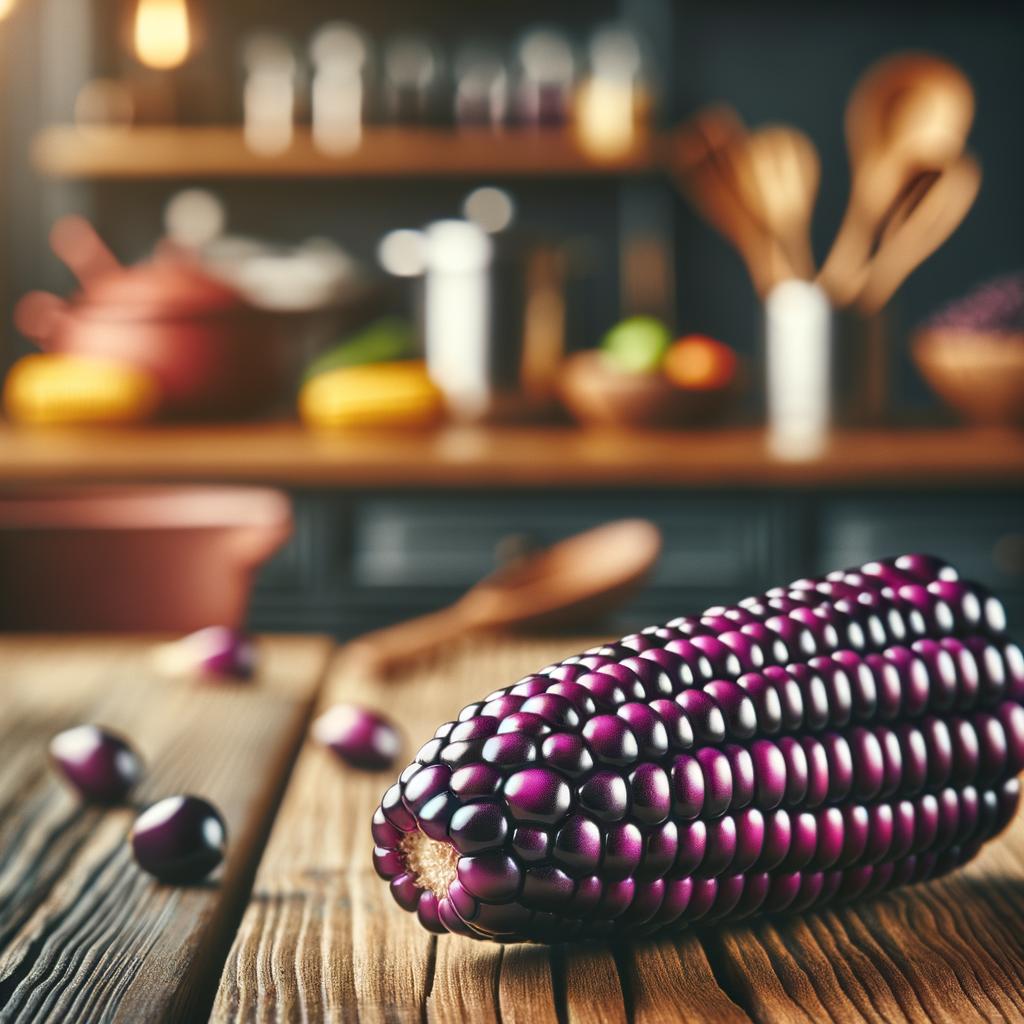Purple Corn

Description
Purple corn, also known as "maiz morado," is a strikingly beautiful variant of corn that hails from the Andean region of South America. Its kernels, ranging from dark, almost black, to a vibrant, royal purple, are a feast for the eyes. Unlike its yellow counterpart, purple corn has a slightly sweeter and nuttier flavor profile, making it a delightfully unique ingredient to work with. Its texture, similar to regular corn, is delightfully crunchy when raw, softening to a tender bite when cooked. The rich, deep color of purple corn is not just for show; it's a sign of its high anthocyanin content, a type of antioxidant that sets it apart from other corn varieties.
Primary Uses
Purple corn is a versatile ingredient that can be used in a variety of culinary applications. It's often used to make "chicha morada," a sweet Peruvian beverage, and "mazamorra morada," a traditional dessert. The corn can also be ground into a flour for bread, tortillas, or used as a natural food coloring. Beyond the culinary world, purple corn has been used in rituals and ceremonies by indigenous Andean cultures, symbolizing life and renewal.
History
Purple corn has a rich history, dating back to ancient civilizations of South America. It was a staple in the diet of the Inca, Maya, and Aztec cultures, and its vibrant color was revered as a symbol of sustenance and life. Over time, its use spread across the continents, and today, it's a beloved ingredient in many global cuisines. There are also many myths and legends surrounding purple corn. One such story tells of a time when the sun god bestowed the corn upon the people as a gift, its color reflecting the hues of the setting sun.
Nutritional Information
Purple corn is not just a pretty face; it's packed with nutritional value. It's rich in anthocyanins, powerful antioxidants that have been studied for their potential to fight cancer, inflammation, and obesity. Purple corn also contains a substantial amount of dietary fiber, which aids in digestion, and essential minerals like magnesium and phosphorus. Compared to regular corn, purple corn has a higher antioxidant content and a slightly higher protein content. However, like all foods, it should be consumed as part of a balanced diet. The story of purple corn is a tale of beauty, history, and health, all wrapped up in one vibrant package.

